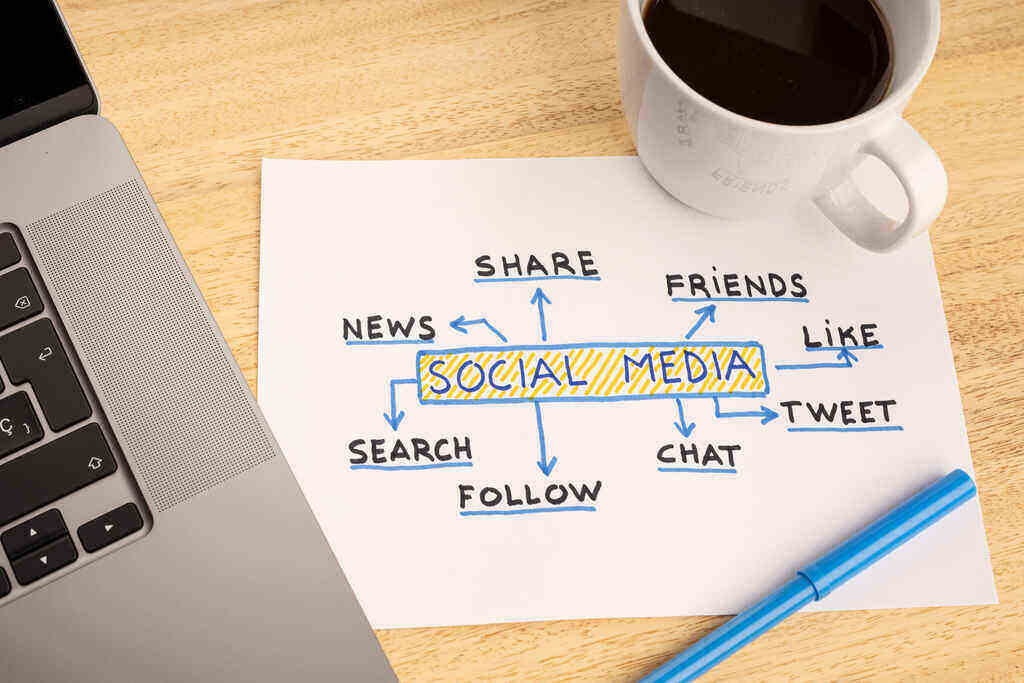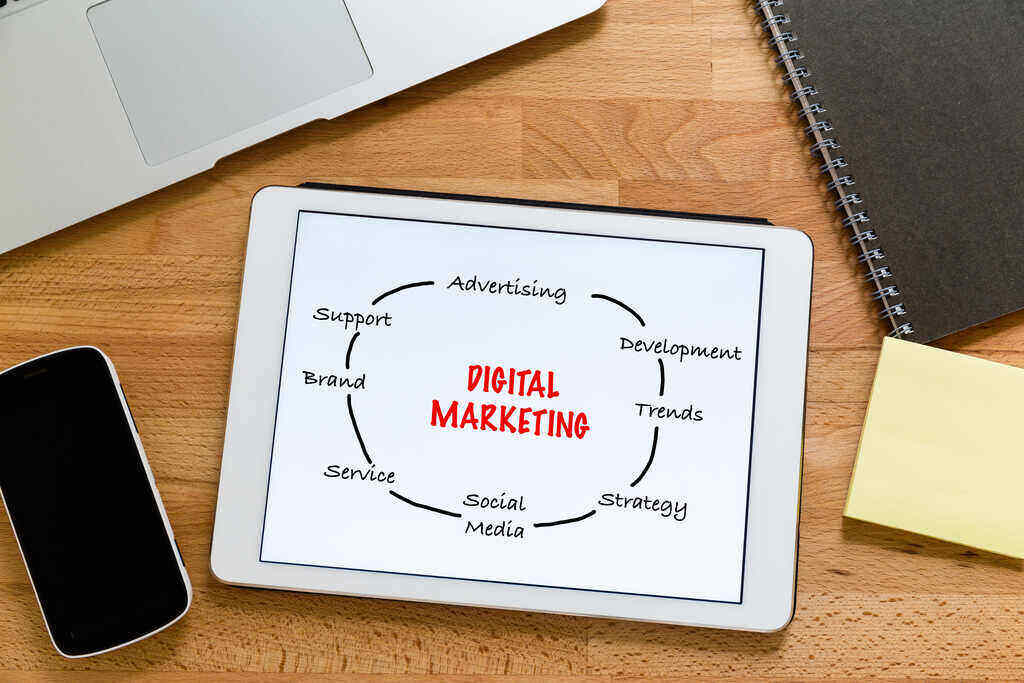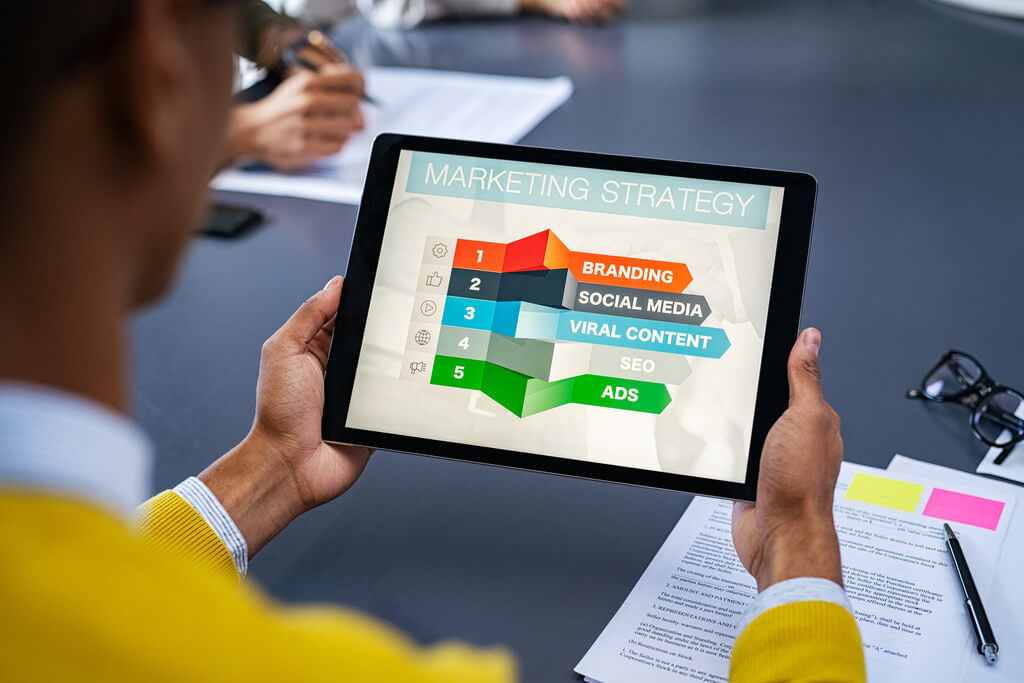Sales Prospecting For B2B Sales & Business Development | Lead Generation 101
Lead Generation 9:32: minEvery business out there is looking to raise its revenue and profit margins. Lead generation is an essential part of the process, getting you valuable website traffic month after month.
There are many factors at play all at once, but the most important one is reaching an audience who shows interest in your products or services. That’s where digital marketing comes in, as it draws valuable traffic to your domain that’ll then go through multiple stages.
Broadly speaking, there are 2 important ways to do lead generation: inbound strategies, and outbound strategies.
The first looks to draw in users organically. To show them exactly what they’re searching for and gradually convert them into customers. It’s softer and less “aggressive”.
The second is all about cold outreach. Phone calls and emails that are unsolicited by your target group. The scope here is identifying a need for your products or services by various parties.
If you’re looking for a full-service B2B lead generation agency, you’ve found us. At X27, we’re experts at online marketing and sales. SEO, PPC, CRO, outreach, coaching; you name it, we do it. Additionally, we’ve already closed $100,000,000+ in B2B sales for our clients.
However, let’s not get into the specifics of a lead generation strategy just yet. In order for you to understand everything about lead generation, we’ve prepared a complete guide below, starting with defining a lead.
Table of Contents
- What is Lead Generation?
- What are Lead Lifecycle Stages?
- The Advantages of Lead Generation
- What is Lead Nurturing?
- Lead Generation Methods
- Can’t I Just Get Leads Faster?
- Properly Qualifying Leads Organically
- What are Lead Generation Strategies?
- Lead Generation Tips
- In Need of Lead Generation?
What is Lead Generation?

A lead is anyone (person or company) that has shown interest in your product or service. It could be a job application or contact form submission, a quote request, a call, you name it. If they’re doing an action that shows they want to connect in any shape or form with your business, they’re a lead.
Typically (when using an inbound lead generation strategy), leads won’t have had any prior communication with your brand before taking that first step themselves.
You wouldn’t have sent them an email or anything similar. They would’ve actually sent you their contact information via a “lead magnet”, willingly!
For example, it could be a popup somewhere on your website for downloading a relevant ebook to your niche, but it requires their name and email address.
Another good lead generation practice is approaching leads with more information about something they’ve already shown interest in. Let’s say you’re an auto repair shop. A lead has just completed a “how to keep your car in top shape” quiz on your website.
It’s appropriate to send them an email afterwards about your oil change service.
This way, you’re working around their interest, instead of just sending them an oil change coupon without any context or prior motive.
In truth, lead generation benefits both customers and businesses.
The purpose of lead generation
- Helping businesses target the right customers from the get-go — no time is wasted and no annoying and unwanted emails are sent
- Increasing brand awareness in an organic and unobtrusive way — gives customers easy access to what they’re searching for, but also places relevant products and services at their disposal
- Creating improvement opportunities for what you’re selling as a business — lead generation allows you to get feedback and suggestions directly from your target group; this also serves to increase their enjoyment of the product or service in the end
- Building brand loyalty — the more a consumer is engaged by a brand’s communication and marketing in a way that resonates with their needs and interests, the greater the “community” feel
You can (and should) also think of leads as part of a life cycle of sorts. Not all leads are ready to be sold something, so their inherent value isn’t the same.
Some of your leads will have just shown interest in your brand and are now ready for marketing; others could be ready to be contacted by your sales department.
Some leads only need to be targeted by infrequent email newsletters or social media posts. They’re already “flag bearers” for your brand.
Correctly identifying your leads’ level of qualification and targeting them with the relevant CTAs (call to action) and information is crucial for your inbound lead generation success. So, let’s talk about that.
What are Lead Lifecycle Stages?

Proper lead generation strategies revolve around the positioning of a given lead in a lifecycle that you establish for your entire target group. In order for the approach to be successful, you must treat all leads as part of one of these stages.
Stranger
These are users who haven’t had previous contact or interactions with your brand. They do not know who you are or what you’re offering. Because of this, they also have no interest in your brand right now. It’s up to you to present your brand to these users through inbound or outbound strategies so that they can go through the process of becoming a paying customer.
Strangers can either find your website through your SEO, social media and PPC efforts, or through cold outreach (direct phone calls and emails).
Cold Outreach Lead
This type of lead is unique to those below (which go through an inbound marketing process). When you approach companies or consumers that haven’t had contact with your brand yet (strangers), you can’t predict accurately the type of responses you’ll get.
Statistically speaking, you can have 3 types of responses: interested users, uninterested users, and no reply at all/doesn’t answer the phone.
One optimization step you can do though is tweaking your message and seeing how it affects email open rates, user attitudes during the call, the number of interested people. Another disadvantage though is that there’s no automated way of placing them in another part of the funnel.
When a user completes a form on your website, you know where they’re situated in your funnel. Marketing automation places them there. For each cold outreach lead though, you have to do the sorting yourself and determine what the next best step is.
However, it’s also an opportunity to form a personal bond with potential clients, to place your brand in a positive light from the start.
Marketing Qualified Lead (MQL)
MQLs are users who interacted with your marketing efforts in some way. However, they aren’t yet ready to complete a purchase. They could’ve ended on one of your blog posts thanks to your SEO and filled out a newsletter form for example.
Or, they could’ve completed a lead magnet for downloading a free ebook (in exchange for their email address).
It’s important to note though that while these leads are showing an interest in learning more about your brand, they will not purchase your product or service yet.
Actually, there’s a good chance they’ll lose their interest if your sales team contacts them at this point, or if you’ll send them information meant for another step in the marketing funnel.
MQLs need to receive communications and information about your brand’s value. Your standards of quality, news, free resources, unique selling proposition (USP; something that you’re doing and your competition is not).
For example, adding a product to a favorites list on your website is a sign of an MQL, and you can retarget them with a softer conversion ad, instead of one that’s focused on “buy now, big sales”.
Or, you can place them in a newsletter list with special news and articles.
Sales Qualified Lead (SQL)

When a user performs an action like requesting the price of your SaaS or adding a pair of shoes in their shopping cart, it’s a strong indicator they’re ready to convert.
Now is this time for your sales team to send them an email, or to use your PPC retargeting ads to let the user know that they have products in their cart, that a product is on sale, etc.
SQLs have already formed an impression of your brand, and they need a gentle but firm nudge towards reinforcing their purchase decision. How you want to do this (message wise) is up to you.
But, remember that you’re no longer selling your company to them, your brand (like you would for MQLs). They already know that your organization is a solid choice for their needs.
Now, you’re speaking to or targeting the customer for precise products or services, for which they’ve shown interest already.
Product Qualified Lead (PQL)
While all leads have the potential of becoming MQLs and SQLs, not all of them will become PQLs. This is a newer categorization for niches with a “free trial” option.
While for MQL and SQL conversion purposes you’re looking to mainly fulfil your internal goals, in a PQL case you want to switch focus on the user themselves.
Here’s what a PQL is exactly. If a stranger downloads a free trial of your software, they’re automatically an MQL. If you’re selling an antivirus for example, and an MQL is checking pricing, they’re an SQL.
Why? Because those prices are always the same. If they’re looking at the pricing options for an SaaS, they’re still an SQL, even if those offers are usually subject to a bespoke package.
However, if they’re requesting an offer after a trial period has finished, they’re now a PQL. See the difference? They’ve already used your software. There are clear signs that it’s suited to their needs because they’re requesting a price. Because of this, your approach should also change when contacting them.
If approached with the correct message for their needs and a personal touch, PQLs can convert faster than SQLs.
Service Qualified Lead (SeQL)
An SeQL is already your customer. They’re using your product or service, but they’re now showing an interest in an upgrade. Maybe they want a better cell phone plan, or more user access for your CMS.
Whatever the exact case, a lead becomes an SeQL when they get in contact with your customer support team themselves.
It’s an intrinsic drive on their part, so you don’t have to be as aggressive with your selling methods. What you’re looking to do here is increasing your customer’s lifetime value (LTV) by not only retaining them, but encouraging them to upgrade.
Make sure to listen closely to what your customer is saying, and recommend the appropriate package for their needs.
A happy customer is both a goal achieved and a great PR boost for your company.
The Advantages of Lead Generation
The Future of Lead Generation
Lead Generation 6:12: minUsually, lead generation will follow the inbound process. It works by making sure your customer finds your brand in an organic manner. It then pushes them from the back every step of the way to warm them up to what you’re selling.
In short, that’s what lead generation is actually: making users trust your business enough to become a paying and recurring customer.
Through organic lead generation, you’re not interfering in your customer’s journey on your platform. However, you can also control it at the same time! How? You have complete oversight on where they’re at in the marketing funnel.
It becomes intuitive to guide them through the actions you want them to take. For example: you can push form submissions, PPC for sales landing pages, surveys, emails, calls, social media brand awareness, etc.
Here’s an example
Definitions can get confusing, so let’s assume the following scenario:
- You’re an electronics ecommerce website that sells TVs, PCs, etc.
- You write an SEO optimized blog post about the top 10 CPUs of 2021 for programming, gaming, photo editing, etc.
- A user finds your article organically through Google Search.
- Within the article, there’s a CTA (call-to-action) somewhere about how to change a CPU’s thermal paste, as it would be relevant information for the user intent of the search.
- The CTA takes the stranger/visitor to a dedicated landing page with a low amount of content that has a lot of concentrated information. The user also has the option of downloading a broader guide on this page, in exchange for their email address.
- There you go, you have another MQL, and you didn’t have to interfere in their organic navigation process in any way.
Lead generation presents users with all the opportunities they need to move from one marketing funnel position to the next, without potentially annoying them with irrelevant information. This serves your company’s revenue goals, while also giving leads what they’re searching for.
What is Lead Nurturing?

You have a lead, so what now? It’s important to remember that generating leads is part of the journey, not the destination of your marketing efforts. If you’re not actively engaging leads that are performing desirable actions on your website, their final conversion into a customer isn’t guaranteed.
Lead nurturing means continuously building a relationship of trust between leads and your company. This means increasing brand awareness, pushing your USP, outlining your organization’s values.
Your principles of quality are what’s going to make you stand out. Leads are way likelier to convert if they believe that your business is professional, effective and efficient, whether you’re selling products or services.
To create a wholesome lead nurturing experience, it also has to be a multichannel effort. From in-store, to your website, social media, emails; basically, everything. The lead’s experience must be consistent. The information they receive must cater to their needs and wants.
For this purpose, you can use marketing automation, SEO optimization, social media engagement and much more.
Focus on delivering what your leads want, as expressed by them. They can make this known either directly in communications with your brand, or through the trackable actions they’re doing on your domain.
The more you understand if what you’re selling is also fulfilling a lead’s needs, the better you can tweak your product and make it more appealing.
Some suggestions:
- Use a lead scoring system — it can be a 1 to 10 scale which grades a lead’s value for your brand (demographic info, wants, needs, time on site, etc) and tells you what information they should be receiving; it’s also an indicator for when they qualify for another step in the funnel; communication between marketing and sales is key here.
- Create quality content — write and inform your audience about the subjects that they’re interested in; optimize it for SEO purposes so it’s found organically.
- Distribute your content multichannel — social media posts, email newsletters, guest posts, podcasts, whatever you have at your disposal.
- Retarget your leads with PPC — awareness or conversion ads can be made for leads that are already qualified in one part of the funnel.
- Be personal in your approach — use your marketing automation tools to also include a lead’s first name in email communications; have your sales representatives build a relationship of trust with your lead; always listen to their feedback and wants, etc.
- Have lead specific offers — reward your existing user base with coupons, discounts, free trials, giveaways, etc.
When you draw the line, lead nurturing is a great motivator for users to purchase something, or to do it in larger quantities and more frequently.
It’s also a reason for existing customers to not switch service providers, to upgrade their packages, and even to buy additional services.
Simple marketing that’s focused just on sales isn’t as effective anymore. You need to create a sense of brand loyalty!
Lead Generation Methods

In short, what you’re doing is using 6 main channels to generate inbound and outbound leads:
- Content
- Social media
- PPC
- Referrals
- Trials or samples
Users originating from the above 6 will then be taken to a relevant landing page via a CTA. On that landing page, you’re going to have a “lead magnet”.
This is a form that visitors will complete with their email address in order to get something (for free). It could also be a standard form like contact, job application, etc, where the user doesn’t receive anything immediately.
Depending on the user’s lifecycle stage at that moment (stranger, MQL, SQL, PQL, SeQL), the form/offer that you have on that page will be different. This is why you need multiple landing pages and offers, as lead generation isn’t a “one size fits all”.
Sometimes, it’ll be enough to use CTAs that lead to sales-oriented landing pages, as you already have their contact information (no need for other lead magnets).
Quality Content
The best way of delivering easily accessible and free information to potential leads is through content marketing. Within the content or alongside it (sidebar, hero image, inline, bottom of the page, links on text, etc) you’ll then place the CTA that starts the lead generation process. Of course, not all content is the same.
Blog posts (attract MQLs) are informational pieces of content relating to a subject from your niche. If you’re selling cars, then you can have articles about “top x sports cars” or “the best 4×4 cars”.
This is just an example, as tons and tons of niches out there have their own informational searches, where the user intent is learning something.
By optimizing your content for SEO, you have the chance of ranking high in SERP for a particular keyword, and displaying your keyword-relevant CTA to a lot of users.
Service/product pages (attract SQLs) are where you’ll describe why a visitor should choose your solutions instead of someone else’s. A visitor can qualify directly as an SQL depending on their search intent, and if your page is structured and optimized accordingly.
If it’s a service area/zone page, you should also work around keywords that include the area where you want leads.
Sales landing pages are a multipurpose sort of tool. They have transactional content, and you actively sell something there or have SQL-related CTAs. Landing pages can also be used for downloading free assets, such as ebooks, courses, demos, checklists, guides, research data, templates, whitepapers, etc.
They can be used as on-site CTA redirects, or as PPC destinations. It all depends on how you choose to use them.
Organic social media

A transparent brand is a consumer-friendly brand. The more active you are on networks like Twitter, Facebook, Instagram, YouTube and Reddit, the more you’ll be promoted algorithmically and your user engagement will rise.
Of course, your company won’t be a good fit for all popular social media channels.
Consider how you choose to position yourself and how your industry is viewed at a public eye level, and proceed from there. Your opportunities are many; Facebook and Instagram stories, longer posts about updates & news, Tweets with concise information or link sharing, subreddits around your niche or company, etc.
With social media holding the importance that it does, it’s effectively crucial to have an up to date and attractive profile. It’s basically your LinkedIn profile but for individual consumers and potential B2C leads.
Also, depending on your industry, the tonality of your communication must be tailored to be funnier, more professional, solemn, etc.
Newsletters and cold outreach
Newsletters are for your already established leads. They’ve been in contact with your brand before (or have explored your platform and shared contact details), so getting them to commit to an action you want will be easier. It helps tremendously to keep your messages short and to the point.
Have a clear CTA and include some special promos if possible. The design should be eye-catching, but whether it should be more professional, comedic or artistic depends on your niche.
Cold outreach is meant for strangers to your brand. They don’t know who you are or what you’re offering. They have no idea if your corporation is trustworthy or if you’ve had results.
Remember that just because you know everything about your business, it doesn’t mean that they do. Actually, you need to convince them that you’re worth their time, same as other brands need to convince you that they’re a good place to spend your money.
Pay-per-Click ads (PPC)
When you choose a PPC route, you have loads of options. The most popular options are of course Google and Facebook, but Bing and Yelp (to name two others) also offer PPC. Even for Facebook, timeline ads aren’t the only way to reach your audience.
For example, you can also push a popular post in front of more people by paying for it. Or, you can use Google PPC for YouTube ads. Think of what fits for your brand and what you need to do.
Are people searching for what you’re selling on Google Search? Would the ads be better if they were on the Display Network? Do your research and see what’s already working for your niche.
With lead generation, you don’t have to reinvent the wheel. It’s already an industry standard. What you must do is implement good lead generation.
Aside from reaching cold audiences, you can also use PPC for retargeting. For example, you can place all of your MQLs in one list and then target them with discount coupons. You can have all of your SeQLs in a different list and create upselling messages for them.
Whatever you do, remember that the crucial aspect is using laser focused offers and messages.
Don’t create an ad because YOU want to sell something. Create it so that your AUDIENCE will want to buy from you.
Referrals (word-of-mouth marketing)

If you make it a priority from the start to establish your business as a quality-driven and trustworthy brand, you’re in for a lot of gain.
In fact, it’s the one thing you have to do for referral marketing to “take it from there”, but it’s also the most difficult. Make no mistake, you have to do this from the get-go, even if it’s complicated.
Why? Because fixing a compromised image, while possible, is way more difficult. If you make it a goal for your consumers to hold you in high regard, then they’ll organically refer you to their friends, family, etc. This doesn’t mean just selling a good product or service.
It means having a USP, having amazing customer support, being active and responsive on social media, having all aspects of your company come together in a consumer-oriented whole.
In many ways, this is similar to lead nurturing. You must have a good product or service, and then show your customer that you’re more than a vendor. Your brand is a set of ideals, of values; it has a reason for existing on the market other than just making profit.
If you know how to achieve this, how to sell your business as an idea, you’ll get loads more free traffic that originates from WOM.
Free trials or samples
Like we’ve explained above, the PQL concept was theorized specifically for software trials. However, we believe there’s an application for it at a smaller scale for physical products too (sampling).
Normally, free trials are an amazing way to attract PQLs because you’re just giving them your product (for a specified number of days).
They can see for themselves if the features of the software are suited to their needs, and if they’re interested in paying for it in the long run.
You can also keep the trial a bit gated if you wish. As in, you don’t give the user access to all the features. You want them yearning for more.
At the same time, this same technique can act as a deterrent, annoying users who expected a fully functioning trial. Think of what you’re selling and what your competition is doing.
You can also have an unlimited free version but with limited capabilities. This is considered acceptable.
There are applicable scenarios for this type of lead generation method outside of the IT branch too, in the form of sampling. Perfumes, ice cream flavors, makeup, personal care products etc.
These can all be given in small quantities so that potential PQLs see if it’s a product they’d enjoy or if it caters to their needs.
Of course, unlike software, it costs you something every time you give away a sample, so you must take that into account.
Can’t I Just Get Leads Faster?

When you take a step back and look at the whole lead generation process, it can be overwhelming. There are a lot of interconnected mechanisms that must each work well by themselves in order to fit into a larger picture.
So, you might consider just buying leads and be done with it. After all, it would save you a lot of time, and it’s not like SEO or PPC is done for free. However, this train of thought has a good chance of making you lose revenue in the long run.
When you’re buying a huge list of people from a third party (which won’t be cheap either) to use it for basically spamming purposes, you’ll run into multiple problems.
- They have no lifecycle stage, as they’ve never interacted with your business before. You won’t know what content or information will be appropriate for them.
- You’d have no idea if they even need your product or service. Contacting loads of people just for the sake of contacting them isn’t efficient. There would only be an off chance that someone wants what you’re selling.
- You’d basically be spamming them, as they never signed up for a newsletter or agreed to be contacted by you. This can get your domain blacklisted pretty quickly if you’re reported enough times. Getting off a blacklist is tricky.
- Your brand image would be damaged. Those people don’t know who you are. However, if they run into your company in the future, they’ll remember that “it’s that brand that spammed me.” Negative information also has a much higher chance of being spread around to others than positive information.
- You’d be breaking industry best practices and negatively impacting your B2B relations. Buying lists of customers and bombarding them with unsolicited information is frowned upon by ethical organizations.
Don’t misunderstand buying leads
You could think that cold outreach also falls into this big “don’t do this” category, but that’s not true. When you’re reaching out to potential leads manually, you’re doing a thorough research first. You’re investigating their niche, their needs, how what you’re selling can make their own business better.
Through cold outreach, you’re using a personal approach that’s customized to a potential lead’s characteristics. Even if they say no, you’ve made your brand’s existence known to them in a respectable and professional way.
Likewise, when you’re getting a call from your phone carrier about a package upgrade opportunity (without your request), they’re trying to qualify you as an SeQL through cold outreach.
However, if some cell company you’ve never heard of is calling you about making you their customer, that’s spam.
See the difference? Cold outreach is targeted and planned. You have information indicating that your services or products are needed. Buying lists of people for the simple chance some will convert is plain spamming. Your reputation and future success are on the line, so it’s not worth gambling with them.
Properly Qualifying Leads Organically

You know by now that a lead is someone who has shown a valid interest in your business. They’ve connected with your brand in one way or another, and they have a real chance of becoming a recurrent customer.
In order to properly qualify them for one of the 4 lifecycle stages though (MQL, SQL, PQL, SeQL), you need their applicable information. Depending on what details you have about your leads, you know what you should contact them about.
Similarly, it’s important to understand from the get-go that depending on your niche, you might be looking at one-time customers instead.
For example, if you’re a recruiting agency, your B2B clients can be recurring, but people looking for jobs will be a “one and done” type of deal. Unless they look for another job in the future of course, but you get the idea. The scenario changes if you’re a clothing e-store, a locally owned grocery shop, a taxi service, etc.
However, you can more or less use the same lead generation tools, but tweak them for your specific needs.
Measuring interest levels in leads
Just because a user visits your website, it doesn’t mean they’re interested in what you’re offering too. For example, if users are coming to your domain via PPC, then that should be very precise targeting that’s making use of a pre-existing interest.
Still, even with PPC, conversions aren’t guaranteed 100%. You’re showing a potential lead an option for their needs and making it as attractive as possible, but the final decision is in their hands.
SEO is also a must-have addition in your “marketing arsenal” for loads of industries. Part of the traffic generated that way will come from informational searches.
If you’re selling pizza and make a blog post about the best pizza toppings, the traffic that post generates won’t always result in sales. Some users will just be interested in the information.
However, you should never use guessing as a metric. All of your important pages must have a CTA that directs users towards a lead lifecycle stage. This depends on what type of leads that page is most likely to generate.
This way, you’re making your services more obvious to both strangers, as well as leads in a transitioning phase to another step in the funnel.
Useful tools:

- Lead magnets are great for promoting free guides, books, checklists, webinars, benchmarks, the like. They’re part of your pages that are SEO optimized for informational searches, and generate MQLs. The usual fields for these forms will be “Name” and “Email”. They’re also a solid addition to your homepage, about us, contact page etc. If a user downloads such industry relevant materials, it’s a good indication they can become an SQL in the future.
- Promo codes are a great tool to both increase your number of SQLs and further motivate your existing ones into converting. If a user has sent you their information for a discount code, it’s time to email them about your products or services (remember to also note about their existing promo code in the copy).
- Newsletter forms can be placed almost anywhere on your website, but an especially good place is within content. If a user engages with your content for longer periods of time, it means they’re finding it informational or entertaining. Subscribing to your newsletter is a clear indication that your new MQL wants to hear from your company in the future.
- Quote requests are an instant SQL determinant. Now it’s up to your sales team to provide a price or overall package that’s attractive to the customer. Bear in mind though that some leads will request quotes from multiple providers just for comparison purposes.
- Application forms are also a clear indication that your lead is interested in the job, service, grant, etc that you’re offering. Make sure to be responsive to their interest, whatever your answer for them might be (whether positive or negative in nature). Providing no answer is very detrimental for lead nurturing.
Keep in mind:
Lead generation varies from industry to industry, but the above general tools can be made specific by you.
Highlight the information that’s most important for you to receive from users. See how long it takes for a lead to move down the funnel towards a conversion, and adjust accordingly.
What matters most is for you to measure actual signs of interest in what you’re selling, not just traffic numbers.
Likewise, remember that information fields should be different when you’re doing B2C and B2B. You should request more info from another company than you would from an end user.
Scoring a lead’s value
So you have a number of leads now, but are unsure how valuable each one of them is to your business. That’s where lead scoring comes in. We’ve touched on it a bit in the previous sections, but let’s get more in-depth.
Basically, lead scoring is your brand’s own way of quantitatively measuring a lead’s importance. It can easily be a numerical scale, a color coded spreadsheet, or anything else that your marketing and sales teams find intuitive.
The criteria for which you’ll score a lead higher or lower is also subjective, which is why we can’t tell you that one way is correct and others aren’t. What matters is having a systemic approach where the parameters make sense for everyone involved.
Is a lead engaging with you a lot on social media? You could score them higher. Does a lead only click links every third newsletter email you send them? You could score them lower. It depends on what actions bring value to your company, and to the lead nurturing strategy overall.
Bottom line: the higher a lead’s interest, engagement and score, the closer they are to becoming a paying customer. Once you figure out you own “secret” for shortening this timespan, transitioning leads into customers will become second nature.
What are Lead Generation Strategies?
Top Lead Generation Mistakes & How to Fix Them
Lead Generation 9:48: minWe’ve talked about methods for inbound and outbound lead generation, but it’s important to knit them all together into a strategy. If you’re just using different lead generation channels without understanding why you’re doing that, chances are you won’t get far.
Similarly, having a strategy will help you understand both how to get a user to your site, and how to best use your CTAs and UX optimization to drive conversions.
Social media is a great place for putting it all together.
Twitter lead generation
Twitter’s one of the most helpful platforms for generating leads, as their “Lead Gen Cards” place gathering leads at your fingertips. You just generate a card, and with the click of a button, your users can input their name, email and username into the form.
You can then take that information and export it for other tools, let’s say Mailchimp (email marketing).
From there, you can then target users for the intent they’ve shown on your Twitter card, and provide them additional information that caters to the interest they’ve shown. This can be a solid strategy whether you’re targeting MQLs or SQLs.
Facebook lead generation
Facebook has a PPC option that’s dedicated exclusively to lead generation. You can get very creative and technical about it, so it’s a subject all in itself. For this article’s purpose though, know that you can get a lead magnet in front of loads of people.
As an example, consider you wanted to teach people how to generate their own leads (much like we’re doing through this blog post). However, you have a top notch video about it.
You could create a “Lead Generation” campaign type through Facebook Ads. In it, you add solid creatives and a complimentary copy.
Then, you do the technical work behind setting up the campaign. Proceed with effectively targeting people which are interested in lead generation and online marketing.
In order to view the video, they have to give you their contact details, which you can easily export from Facebook Ads for up to 90 days.
This data can be used in the same way, to direct your new leads to landing pages built around their shown interest, or to place conversion opportunities at their disposal right in their inbox.
LinkedIn lead generation
If you’re providing B2B services or products, you have to use LinkedIn. It’s as important to B2B relationships as other social media networks are for B2C. Your LinkedIn profile is as much your business’ “face” as your website is.
Moreover, it’s where you can get in direct contact with other companies and brands, where you can forward your USP and pitches lightning fast.
LinkedIn is where you can use cold outreach tactics that are personalized and brand-specific, while also using their “Lead Gen Forms”, that work similarly to Twitter’s.
After all, everyone on LinkedIn is a person in their own right even if it’s a business social network. Use the available tools to reach out to the individuals too.
You can also share articles and polls on LinkedIn, and restructure your strategies based on those results and feedback (if needed). The articles can be lead generation tools themselves too.
SEO & PPC lead generation
SEO and PPC are done completely separate from each other, but a joint approach is better. That’s because they compliment each other splendidly.
With SEO, you can reach a varied audience for free by using niche related keywords. Informational searches, transactional searches, they should all be a goal for your SEO efforts.
By optimizing pages accordingly, you’ll cater not only to users looking for that information, but to users with a high potential of becoming MQLs and SQLs too. Give your audience what they’re searching for in a comprehensible manner, and that CTA click from their part will be that much closer.
On the flipside, PPC is amazing for generating leads in a much more direct and targeted way. The audience is different though, as you want to reach users that already know what they’re looking to buy, or what service they need.
Additionally, you can retarget users that came to your site thanks to SEO, depending on their level of lead qualification.
Go the extra mile and have quality copy for both your SEO and PPC needs, and you’ll have the recipe for success.
Lead Generation Tips

Inbound lead generation strategies are highly dependent on letting contact details sharing be the user’s choice. Your job is structuring your pages and your marketing channels efforts in a way which motivates the users into this decision.
However, you must also make sure to have the proper tools and systems in place to collect and store all of this data.
- Google Analytics — Some users won’t click your CTAs or submit your forms, but it’s useful to understand their demographic & time on site data nonetheless. The most basic tool you must use in this regard is Google Analytics. You can go as light or as in-depth as you want with it. You can easily see where your users are mostly coming from (country, traffic source, visited pages etc) and what they’re doing on your site. Integrating it with Google Tag Manager for precise event tracking is a great idea too.
- CTA templates — You don’t have to think of new ways to request contact information every time. There are lots of well made templates out there that are customizable. Simply find the ones that fit your business the most and implement them on your site; there’s a good chance they have integration options for popular CMSs built in. You can also coordinate with your development team to create your own forms and link them with your systems.
- Heatmap tools — If your CTAs aren’t converting as well as you’d wish, there’s a chance they just aren’t placed properly. Heatmap software (like Hotjar) shows you a visual representation of your user’s browsing experience by color coding their clicks on your webpages. It accurately shows you which parts of a page gets more interest, so you can structure your CTAs around it.
Keep these general ideas in mind too:
Use landing pages
No lead generation CTA should lead to a pre-existing page on your website. Your homepage or service page is already in the navigation menu. When a user clicks a CTA that promises something or tries to sell something, they expect clear and concise information.
This is why you have to create landing pages for every CTA in particular. You have to tailor them around the message, the scope of the offer, the objective of the user on that page. These pages don’t have to be SEO-focused anyway, so don’t restrict your content in that way. Write to convince and convert.
The same concept applies to your PPC lead generation campaigns. Each one must have its own landing page, no exception!
Create relevant offers
Your leads are interested in different things depending on their current qualification for your funnel. MQLs aren’t ready to buy what you’re selling yet, so trying to push them products will be fruitless.
Instead, they’re still looking for valuable information, free resources; to be nurtured by your company and grow a relationship of trust. If you can’t provide them these things, they aren’t coming back.
SQLs on the other hand have already formed their impression about your brand and could be ready to convert. Target them with sales emails, CTAs, and calls. They know who you are and are already considering you as a vendor, so reinforce that decision with coupons, trials, demos, samples, etc.
Don’t oversell

When trying to attract new customers, it can be tempting to go overboard with your offers and promises. This is a mistake. Only advertise what you’ll be able to deliver, as potential customers lose interest in an instant if they don’t see exactly what’s been promised.
You must ensure that when users click on your ad, your SERP result or any of your CTAs, they’re taken to a page that completely fulfills their search intent. Consistent messaging is key throughout your channels, including the final page of the user’s journey.
If you qualify a lead by using false or exaggerated information, moving them to the next step of the funnel will become very difficult.
Communicate internally
Usually, your marketing team qualifies leads as MQLs or SQLs, but are your SQLs converting in the end? Input from your sales team is crucial here, as they’re the ones that are actively engaging the customer if you’re selling a service or a very specific product.
Make sure everyone agrees on the lead scoring system you’re using.
Use social media
Social media is a very versatile tool. You can use it for many parts of your marketing funnel, including lead generation (like we’ve mentioned above too). Using PPC ads or forms within the platform itself works, but you can do other things too.
For example, see which of your landing pages are performing really well on your website. Or, see which blog post is converting really well as far as your CTAs are concerned. Then, link to them via your social media too.
Within the post itself you should use eye-catching copy, images, and clear explanations that you’ll direct users to another site (you can do this by simply adding the link visibly).
Giveaways are also amazing for social media if you can afford them, as you’re rewarding your audience for being part of your community.
No trend lasts forever
No trend is set in stone for the ages. Dynamics and strategies eventually stop working because audiences start reacting to other approaches. There could also be newer technologies for better marketing methods.
While the idea of lead generation is most likely here to stay, the ways in which you generate leads are subject to change. Our advice is that first and foremost you learn the core concepts.
This way, you’ll be able to adapt them to new tools and plans down the line. In other words: focus on learning how to do lead generation, not just what to do it with.
In Need of Lead Generation?

Learning lead generation properly and putting it all into place is a time consuming process. Instead, why not leave it to the pros?
At X27 Marketing, we’re experts at building lead pipelines that generate substantial ROI for your business. We’ve already closed over $100,000,000 in B2B sales, and got our clients meetings with fortune 500 companies.
We do everything there is: from SEO, to outreach, PPC, sales, PR, CRO, coaching, etc. You name it, we’ve done it!
Contact us today and let’s talk about how we’ll generate you qualified leads in a way that’s tailored to your business.








